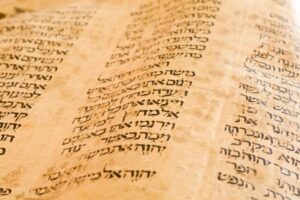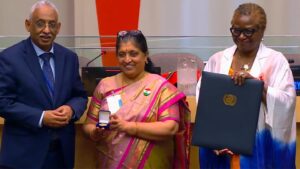Table of Contents
Unopposed Candidates in Elections
Context: The BJP candidate Mukesh Dalal from Surat Lok Sabha constituency in Gujarat was declared elected unopposed.
Legal Framework for Nominations
- Section 33 of the Representation of the People Act, 1951: Outlines requirements for a valid nomination, including age criteria and the number of proposers based on party recognition.
- Candidate: Must be an elector (voter) above 25 years old.
- Proposers:
- National/State recognized party candidate: 1 proposer, an elector from the constituency.
- Unrecognised party/Independent candidate: 10 proposers, all electors from the constituency.
- Section 36 of the RP Act: Deals with the scrutiny of nomination papers by the Returning Officer (RO), noting that significant defects, such as non-genuine signatures, can lead to rejection.
- Number of Nominations: A candidate can file up to 4 nomination papers with different sets of proposers.
- Scrutiny Process:
- The Returning Officer (RO) scrutinises nomination papers.
- Minor defects won’t lead to rejection (e.g., typos).
- Missing or forged signatures of the candidate or proposer are grounds for rejection.
Current Issue
- Nomination Rejections: In the Surat Lok Sabha constituency, the signatures in question belonged to the proposers, who later affirmed they had not signed the documents.
- Similar issues arose with the nomination papers of a substitute candidate put forth by the same party.
- These complications were further compounded by objections raised by members of a rival party, leading to the scrutiny and eventual rejection of the nominations.
- Withdrawal of Other Nominations: Adding to the situation, other candidates from different parties or independents who had filed nominations withdrew their candidacies.
- This series of withdrawals and rejections effectively left one candidate standing unopposed in the election.
Legal Recourse
- Article 329(b) of the Constitution combined with the RP Act, suggests that election issues can only be challenged through an election petition in the High Court.
- This provides a structured legal avenue for addressing grievances related to electoral processes.
|
Related Information |
Historically, 35 candidates have been elected unopposed to the Lok Sabha, primarily in the early decades post-independence, with the last instance in 2012.
|
Redistributing Privately Owned Property
Context: The Supreme Court of India began hearings on a case regarding the government’s power to acquire and redistribute privately owned properties as “material resources of the community,” as stipulated in Article 39(b) of the Constitution.
Article 39(b) of the Constitution
- This article is part of the Directive Principles of State Policy (DPSP) in Part IV of the Constitution, which are guiding principles for lawmaking but are not enforceable in court.
- Historical Context of Article 39(b):
- Case of State of Karnataka v Shri Ranganatha Reddy (1977): A seven-judge bench concluded by a 4:3 majority that private resources do not fall within “material resources of the community.”
- Justice Krishna Iyer’s Minority Opinion: In contrast, Justice Krishna Iyer argued that private resources should be considered community material resources, stating that excluding private ownership from Article 39(b) negates its purpose of redistribution.
Supreme Court Affirmation of Iyer’s Opinion
- Sanjeev Coke Manufacturing Company v Bharat Coking Coal (1983): A five-judge bench validated the nationalisation of coal mines and coke oven plants based on Article 39(b).
- This interpretation suggested that the transformation of wealth from private to public ownership is encompassed within the article.
- Mafatlal Industries Ltd v Union of India (1996): Expanded the definition of “material resources” under Article 39(b) to include both natural resources and all movable or immovable property, public and private.
Current Case: Acquisition of Cessed Properties in Mumbai
- The case originated from a 1986 amendment to the Maharashtra Housing and Area Development Act, 1976 (MHADA), which involved acquiring cessed buildings in Mumbai to transfer them to needy persons.
- This amendment aimed to address the city’s issue with unsafe, dilapidated buildings by facilitating repairs and reconstructions.
- Property owners challenged the amendment, arguing it violated their Right to Equality under Article 14.
Legal History
- The Bombay High Court rejected the challenge, citing Article 31C which protects laws based on DPSPs.
- The Association appealed to the SC in 1992. The central question is whether Article 39(b) covers private resources.
- The case has been through multiple benches since then, with some judges expressing reservations about including private resources.
- Currently, a nine-judge bench is hearing the case.
A 244(A), Autonomous Regions
Context: In Assam’s tribal-majority Diphu Lok Sabha constituency candidates of all parties have promised the implementation of Article 244(A) of the Constitution to create an autonomous ‘state within a state’.
|
Geographic and Social Profile of Diphu |
|
About Article 244 (A) of the Indian Constitution
- Added by The Constitution (22nd Amendment) Act, 1969, it allows Parliament to form an autonomous state within Assam comprising specified tribal areas.
- This autonomous state would have its own legislature and/or council of ministers, granting greater autonomy compared to the Sixth Schedule provisions for tribal areas.
- It aims to provide greater autonomy beyond what the Sixth Schedule offers, including having its own legislature or council of ministers.
|
Sixth Schedule vs. Article 244(A) |
|
Historical Context
- The push for autonomy in Diphu dates back to the 1950s and contributed to the formation of Meghalaya in 1972.
- Although Karbi Anglong opted to remain with Assam due to the promise of Article 244(A).
- Memorandum of Settlement 1995: Increased the number of departments under the autonomous councils’ control from 10 to 30.
- The Autonomous State Demand Committee (ASDC) contested elections and continues to advocate for autonomy.
- Unfulfilled promises led to armed insurgency by some groups.
- Peace accords have been signed with militant groups in recent years, offering development packages but not addressing Article 244(A).
Mass Graves in Gaza
Context: The United Nations has called for a clear and credible investigation into mass graves found at two major hospitals in war-torn Gaza.
More In News
- These graves reportedly have 283 bodies and were uncovered by Israeli troops.
- The UN human rights expressed horror at the destruction of the medical centres in Gaza City and Nasser Hospital in the southern city of Khan Younis.
- Israel has procured tents to evacuate thousands of Palestinians from Rafah in anticipation of a ground assault on Hamas in the Gaza Strip.
Gaza Strip

- Territorial Status: The Gaza Strip is governed by Palestinians and is located along the eastern Mediterranean coast.
- Main City: Gaza City serves as the primary urban centre.
- Relative Size: It is the smaller counterpart of the two Palestinian territories, with the West Bank being the other.
- Borders: Israel borders the Gaza Strip to the north and east, while Egypt borders it to the south.
- Geographical Dimensions: Spanning 41 kilometres in length and 10 kilometres in width.
- Climate: The region experiences mild winters and hot, dry summers typical of a temperate climate.
Population and Demographics
- Density: The Gaza Strip is one of the world’s most densely populated regions.
- Population Count: Over 2 million inhabitants reside here.
- Ethnic Majority: Predominantly Palestinian with a Sunni Muslim majority.
Historical Context
- Post-1948 Control: Egypt administered the Gaza Strip after 1948 until Israel took over following the 1967 Six-Day War.
- Israeli Settlements: Israel maintained control for 38 years, during which time 21 Jewish settlements were established.
- 2005 Israeli Disengagement: Israel withdrew settlers and military presence, leaving the Palestinian Authority with governance responsibilities.
Current Governance
- Ruling Body: Hamas, an Islamist Palestinian organisation, has been the de facto governing body since 2007.
- Political Background: Hamas secured control following election victories in 2006 and has since not held further elections.
- Stance on Israel: Hamas does not recognize the state of Israel.
- Blockade: Israel imposed a land, sea, and air blockade on the Gaza Strip starting in 2007.
Examples, Data and Case Studies for Value Addition
- Global Food Crisis (GS 2): As per the 2024 Global Report on Food Crisis (GRFC), nearly 282 million people faced high levels of acute food insecurity in 59 countries in 2023, with extreme weather being the second most significant factor driving the food crisis.
- Rejuvenation of River (GS 3): Vaijinath Ghongade, a 77-year-old from Maharashtra, spurred the revitalization of the Manganga River, enhancing local ecosystems and farming livelihoods. Mobilising community efforts and funds, the six-year initiative removed 20 lakh cubic metres of silt, replenished soil fertility, and improved water retention, benefitting hundreds of farmers in the drought-prone region.


 India to Host First Global Conference on...
India to Host First Global Conference on...
 How Terror Networks Abuse Digital Tools
How Terror Networks Abuse Digital Tools
 United Nations Population Award 2025: Va...
United Nations Population Award 2025: Va...





















